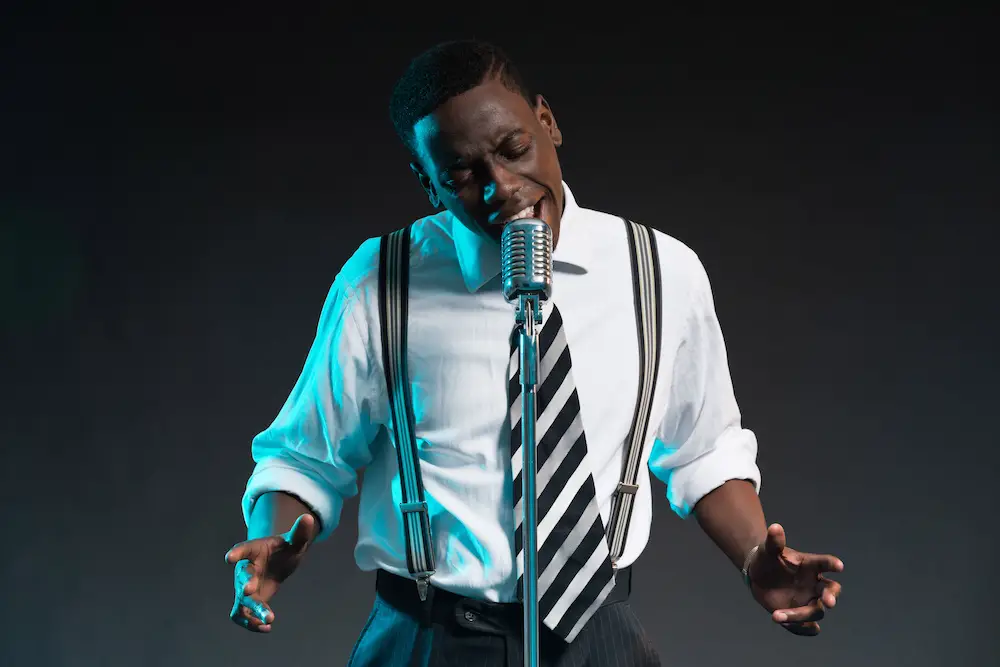How to Sing Jazz Like a Pro
by vocals-in-tunepublished on
Jazz has always been considered one of the coolest music genres that can draw every ear towards the singer or radio. That is why so many people want to learn how to sing jazz.
If you're one of them, today, we'll teach you how to do so, not just to impress your friends at the next karaoke party but also to make you a better singer in general.
How to Sing Jazz: Our Top Tips
Singing jazz doesn't require you to have an extraordinary vocal range or technique, which makes it great. It is about exploring your singing voice's different and unique qualities and how you can personalize a song. It should feel like a natural extension of your speaking voice.
To achieve that, here are some of the things that you could do:
1. Have a Good Understanding of Jazz
Before learning how you can sing jazz, you should be truly into this genre of music. The best way to do so is by completely immersing yourself in the music of some world-renowned jazz singers.
These singers include Carmen McRae, Sarah Vaughan, Ella Fitzgerald, Peggy Lee, and Betty Carter among the females.
For male jazz singers, we have Frank Sinatra, Nat King Cole, Joe Williams, Louis Armstrong, Mark Murphy, Tony Bennett, and Jon Hendricks.
Listening to songs from these artists will help you understand jazz music better.
2. Invest in a Microphone
The microphone's development is quite a bit linked to the evolution of jazz. This small device has it possible to do several subtle things vocally like singing more in a breathy manner or whispering.
To practice jazz, it is ideal that you invest in a high-quality home studio microphone or a portable PA since this will make your natural singing voice sound quite different. As you practice singing jazz with your microphone and become more advanced, you'll get used to your new amplified voice. Once you feel you have reached that stage where your voice on the microphone sounds better, you should record yourself.
You should also start listening to your voice instead of other singers to help you do certain tweaks to fine-tune it to perfection. Once you are comfortable with and confident about how your voice sounds through the microphone, you should look out for opportunities to showcase your talent. That can be open mic sessions and vocal jazz workshops.
3. Choose the Right Songs
We recommend buying a songbook, preferably the one that contains songs from the “great American songbook”. Most professionals consider it to be the standard repertoire of a lot of jazz singers. It includes songs from several famous singers like Cole Porter, Jerome Kern, Geroge, Gershwin, and Irving Berlin. The songbook also comes with sheet music along with the piano accompaniment. It also contains chord symbols and melodic lines.
Additionally, it is considered as Real Books. You will find that many jazz musicians tend to prefer the work from Real Books because it opens the way to a freer form of accompaniment. We also highly recommend that you sing along to a variety of different jazz songs from multiple artists.
Keep a close eye on whether you can reach all of the high and low notes comfortably. You should also check whether the tempo of those songs is comfortable for you or not. Additionally, you can sing a piece in a different key to make it perfect for your singing voice.

4. Practice Proper Breathing
The better you can breathe like a professional singer, the longer you will be able to belt those high and low notes without needing to stop and taking a breath.
As an exercise to breathe just as a singer does, stand up straight but not stiff. Place your hand above your waist on the ribcage. Four of your fingers should be on the front of the rib cage while the thumbs should be on the back. Take a slow and deep breath. Feel the ribcage expand in an outward direction all around. That is exactly how you should be breathing when you sing.
5. Find the Right Key
When you learn a song, you must find a comfortable key for you to sing in. An ideal way for you to do this is by beginning to sing a song freely and away from the actual song.
Make sure you are experimenting with different keys, and then you can play with a guitar or piano to work out the exact key that you have been singing in.
Helpful Tips
The key that you sing in may not necessarily be the same as the note that you are starting on, but it may be the note that you’re finishing on. Once you exactly know the key that you sing in for a particular song, you can use it for future reference. That is good to know because if an accompanist asks you the song you wish to sing, you can tell them the exact key you are comfortable singing with.
For a performance, make sure that you produce a song sheet in the key you sing for your accompanist and yourself.
How to Transpose Music
Transposing a song without prior knowledge of music theory can be very tricky. However, you can find help online by subscribing or buying music programs like Sibelius or Band in Box. All you need to do is enter the chord and melody mentioned in the Real Book, and the program will transpose it into your key.
6. Sing Like You're Speaking
You will notice that a lot of jazz singing will occur on the same pitch we use when speaking. Thinking of singing as projected singing will make it simpler. Make sure to use your singer's breath and practice projecting phrases and words for a song as a typical speech.
Now, you can add the notes back in it and maintain the speech-like quality. You can stand in front of the mirror to ensure that your face and body stay relaxed as you sing.
7. Learn the Melody and Lyrics
After you have found the right key for yourself, you need to learn the melody and lyrics of a well-chosen standard. Ideally, you begin with the lyrics. Memorize the lyrics as if it is a poem.
Your goal is to move your audience by conveying the lyrics as if it is originally a poem set to music.
When you memorize the lyrics, make sure to read them aloud and stress all the important words. For instance, the song “All of You” by Cole Porter opens with the line “I love the look of you.”
Make sure you are stressing the words “Love”, “Look”, and “You” so that you are conveying the phrase’s meaning. That emphasis on the words will bring the entire lyrics to life.
Once you are set with the lyrics, you can take a look at the melody. You can begin by singing the melodic line to “do-bi-do" or “la-la-la" with good intonation and clear diction. For a more advanced exercise, you can sing only the vowels. For example, “Summertime” would be “u-er-i".
That will draw attention to those countless “colors” present in your voice.
Keep in mind that you shouldn’t fall into the trap of only singing a song that one singer interprets.
8. Practice Rhythmic Displacement
The freedom to spontaneously loosen up a song’s rhythm to add more intensity to it is one of the joys of singing the jazz genre. To practice rhythmic displacement, you must start by learning a smooth ballad. "Embraceable You" by George and Ira Gershwin is an excellent example.
After memorizing this song, you can start to loosen up the timing of every phrase slowly. The main idea here is to sing the lyrics rather than you might say them. Try lengthening and shortening multiple notes every time you are singing a line. You will also notice how playing with it will change the emphasis on the words, helping put out your own stamp on the song.
To make yourself sound more as if you are singing a jazz number, you can leave a short space before you launch into every phrase. This space can be roughly the length of a clap.
9. Learn to Swing
The other key part of jazz singing is the option to swing. Begin by focusing on the off beats in your song. Generally, when you sing in 4/4 time or four beats in a bar, the stress will be on beats one and three. On the contrary, in classical music and jazz, the stress will be on beats two and four or the off beats.
Have a go at saying "one, two, three, four" while you click your fingers on beats one and three, and afterward on beats two and four. By focusing on beats two and four, we draw nearer to the swing's essence. Try to sing a familiar standard like "All of Me" by Seymour Simons and Gerald Marks.
Learning to Sing Jazz
By choosing the right kind of songs and following and practicing the techniques we mentioned above, you can learn how to sing jazz quickly and correctly.
Make sure you use this new skill at open mics and other events to blow people’s minds, have fun, and, most importantly, be a great jazz singer!
